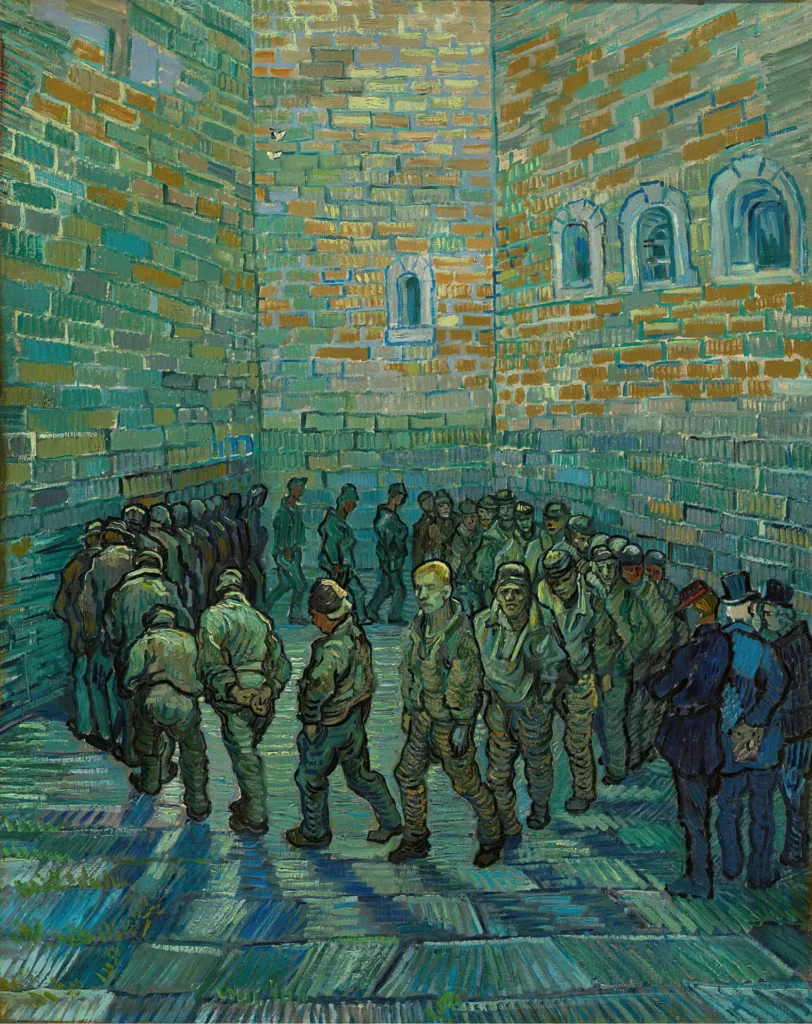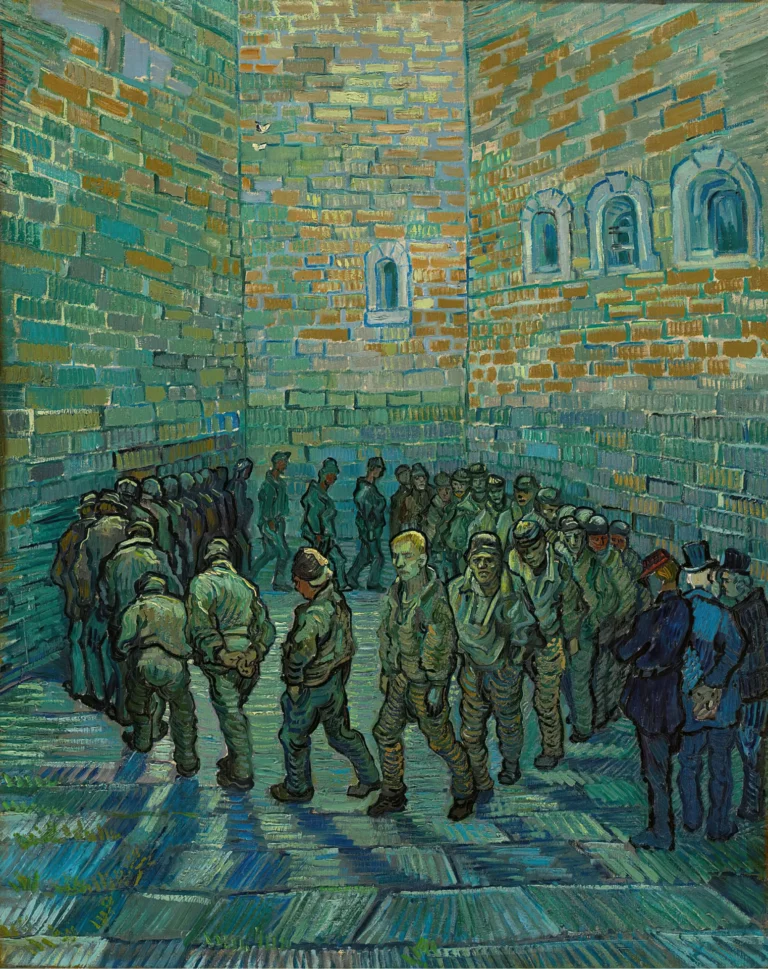The Prison Courtyard (1890)
This evocative painting by Vincent van Gogh captures a solemn scene of prisoners exercising in a grim courtyard. Created during his time at the Saint-Paul Asylum, the artwork is inspired by Gustave Doré's earlier work. Van Gogh infuses the piece with his signature brushwork and color palette, dominated by blues and greens, conveying a sense of confinement and emotional turmoil. The solitary figure possibly resembling Van Gogh himself further emphasizes the themes of isolation and mental distress. This powerful representation resonates deeply with the human experience, marking a significant point in Van Gogh's troubled life.
February 1890
About the Artwork
Created during a turbulent period in Vincent van Gogh's life while he was a patient at the Saint-Paul Asylum, The Prison Courtyard translates his feelings of confinement and despair onto canvas. The painting draws inspiration from Gustave Doré's 1872 engraving of Newgate Prison but is uniquely interpreted with dark hues that reflect Van Gogh's own mental state. The scene portrays a circular group of prisoners, drawing attention to their monotonous existence under watchful eyes, embedded with a personal touch as one figure, possibly a reflection of Van Gogh himself, gazes outwards. This artwork encapsulates an enduring sense of isolation, mirroring Van Gogh's own struggles with mental illness. Displayed around his coffin at his funeral, it carries both personal and artistic significance, cementing its status in art history.
Did You Know
Liked what you see? Add it to your collection.
Enjoyed reading? Share it.
... continued
The Prison Courtyard
Creation and Inspiration
The painting was created while Van Gogh was a patient at the Saint-Paul Asylum in Saint-Rémy-de-Provence. It was inspired by an 1872 engraving by Gustave Doré, specifically the exercise yard at Newgate Prison in London, which was featured in Doré's book 'London: A Pilgrimage'.
Technique and Style
Van Gogh did not copy Doré's print directly but instead worked from a woodblock reproduction by Héliodore Pisan, published in the Dutch magazine 'De Katholieke Illustratie'. He added his own color interpretation to the black and white print, resulting in a painting dominated by depressing tones of blue and green, with splashes of red on the better-lit bricks and two small white butterflies.
Composition
The painting depicts a group of prisoners walking in a circle around a claustrophobic prison yard, surrounded by high brick walls with small arched windows. The scene includes detectives observing the prisoners to remember their faces. One prisoner at the front, possibly resembling Van Gogh himself, looks out at the viewer. This composition reflects Van Gogh's own feelings of physical and mental confinement during his time at the asylum.
Significance and Context
This painting was created during a particularly troubled period in Van Gogh's life, marked by severe depression and mental illness. The work symbolizes his psychological isolation and the cyclic nature of his mental health struggles. It was one of the paintings displayed around his coffin before his funeral in July 1890.
Current Location
The original oil painting is held by the Pushkin Museum in Moscow, Russia. It was part of Ivan Morozov's collection before being nationalized by the Soviet government and eventually transferred to the Pushkin Museum in 1948.
Legacy
The painting has had a significant impact on art and culture. It inspired a scene in Stanley Kubrick's 1971 film 'A Clockwork Orange' and continues to be a powerful representation of the themes of confinement, mental health, and the human condition.










